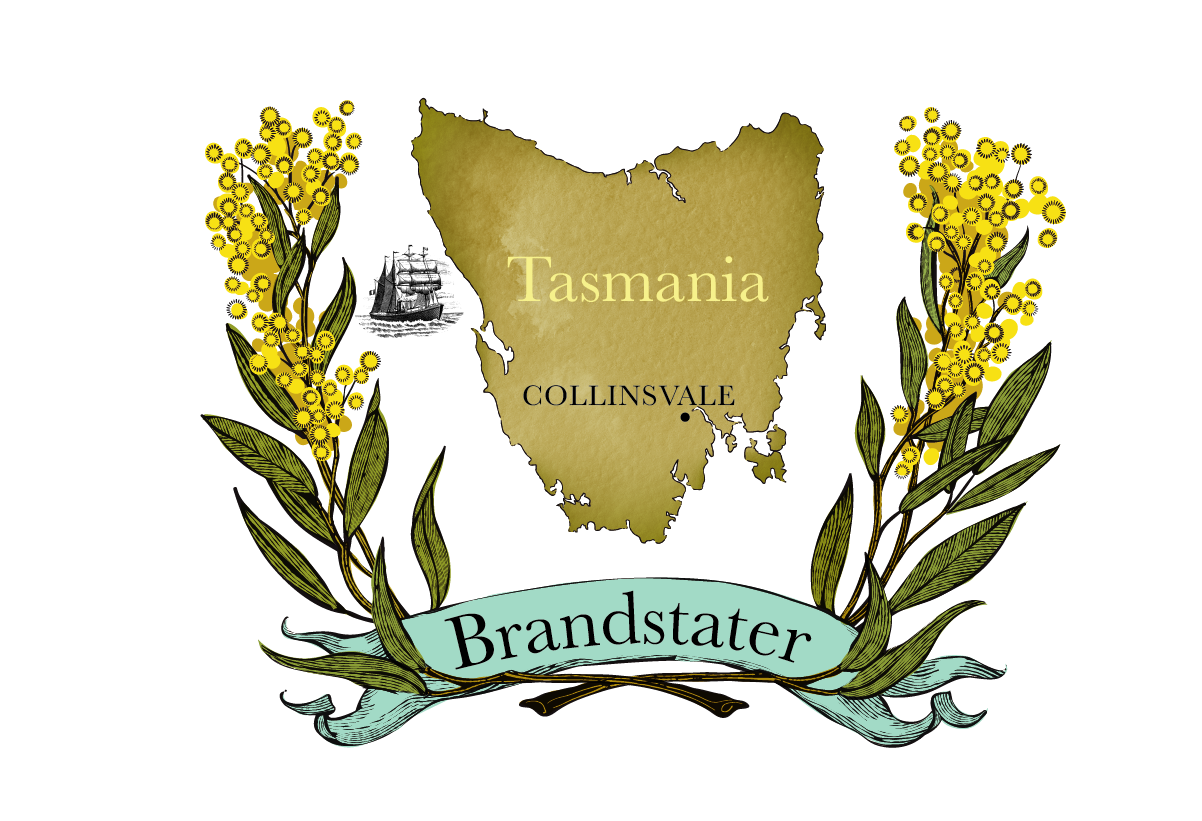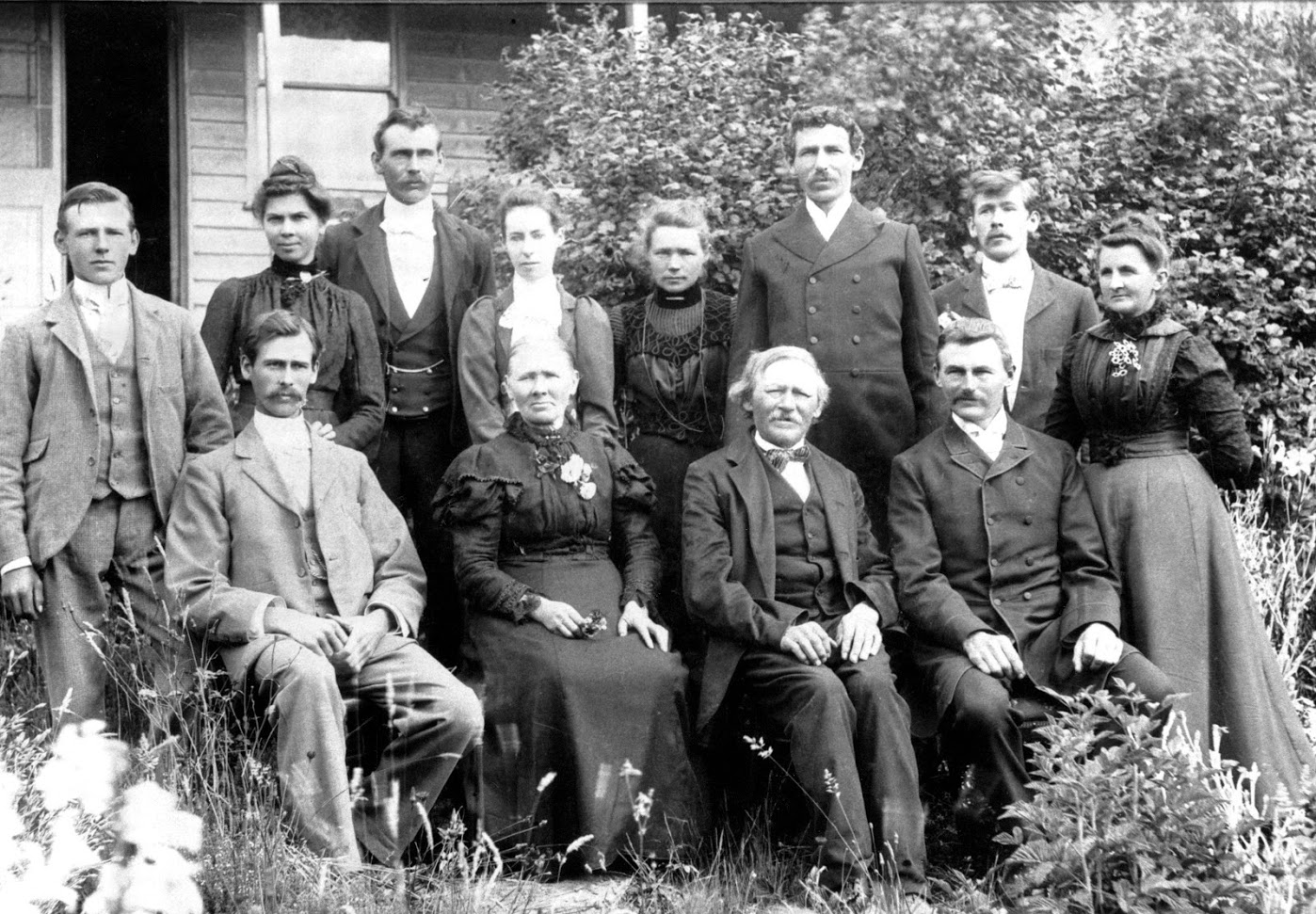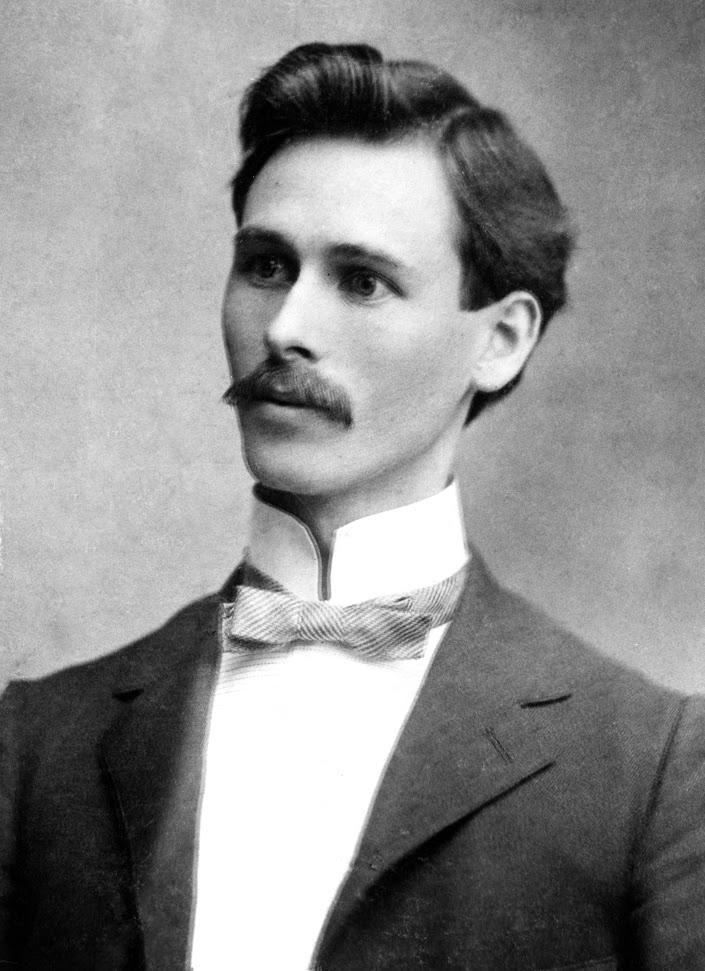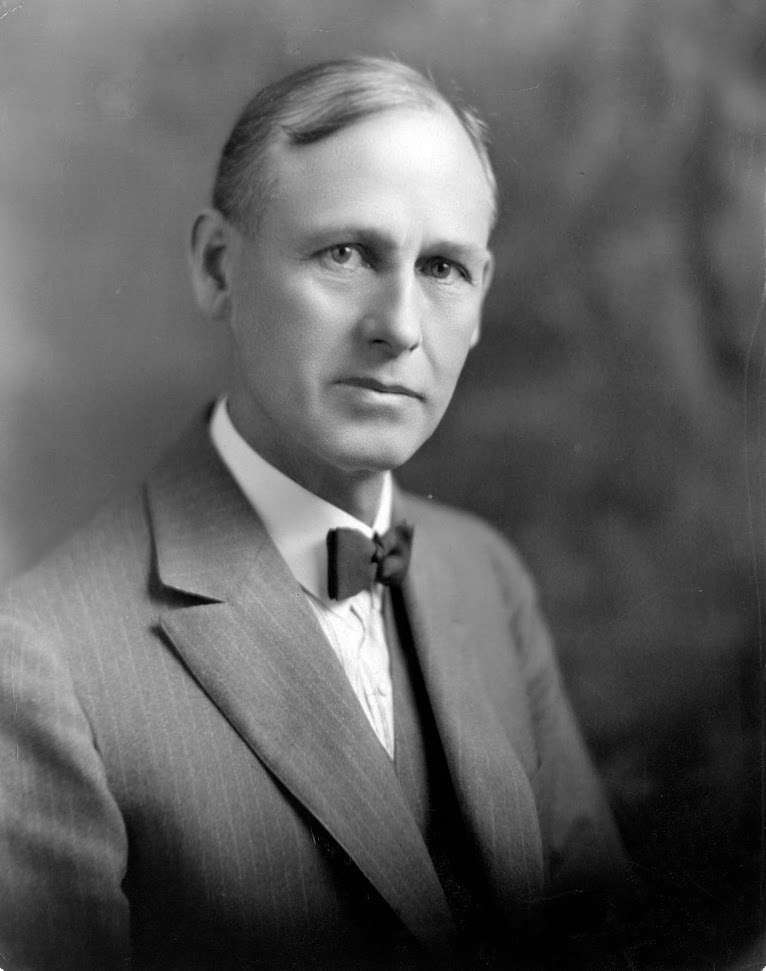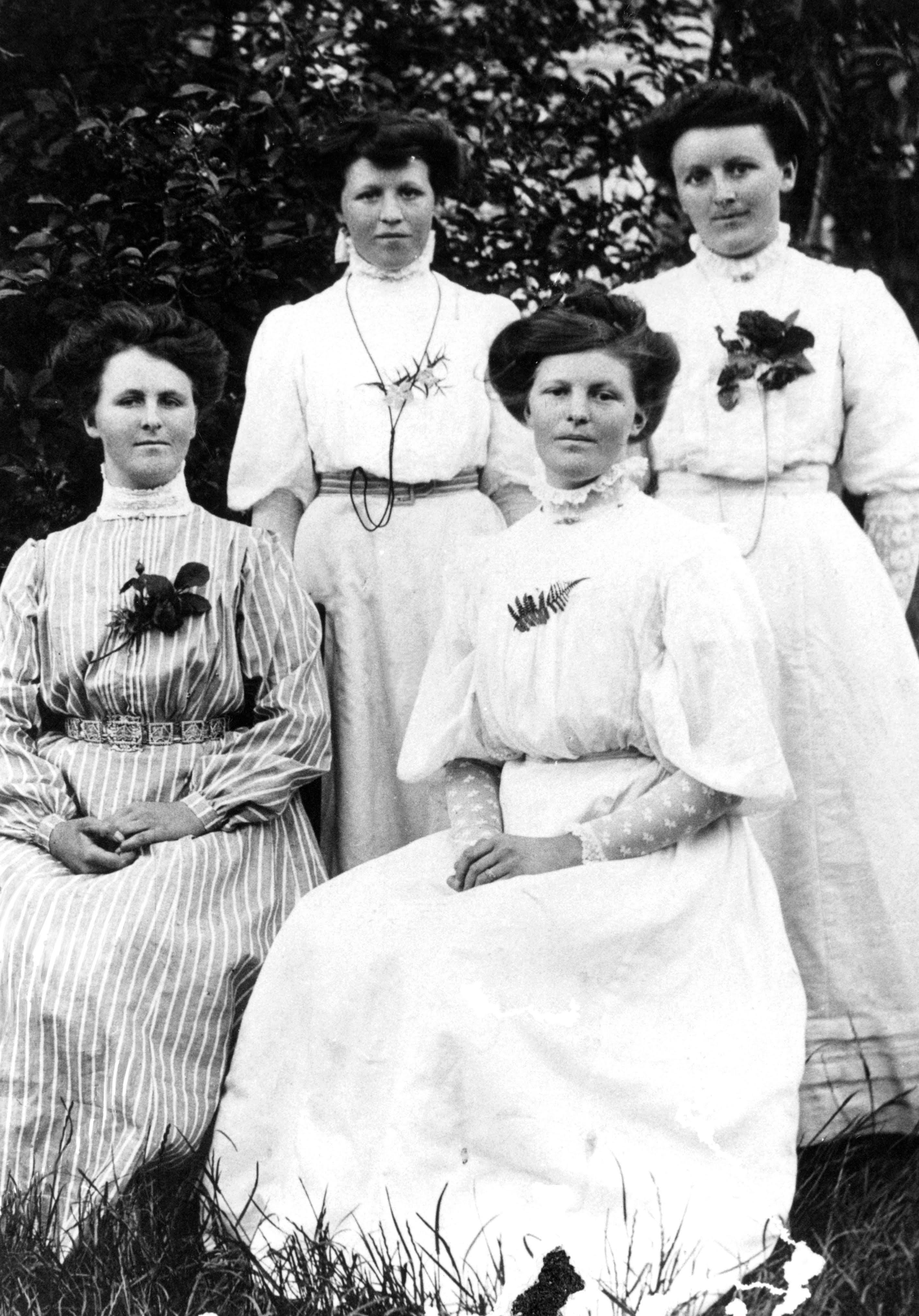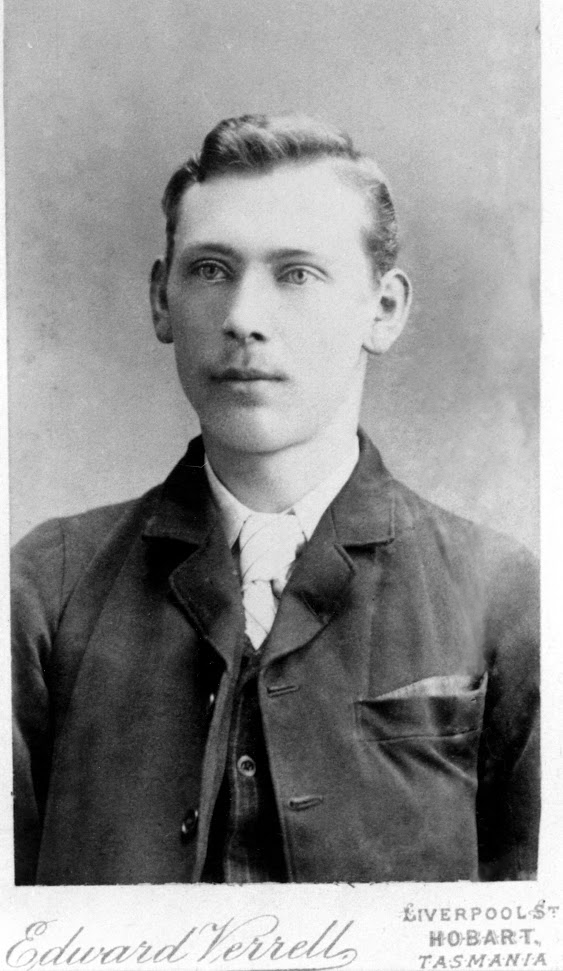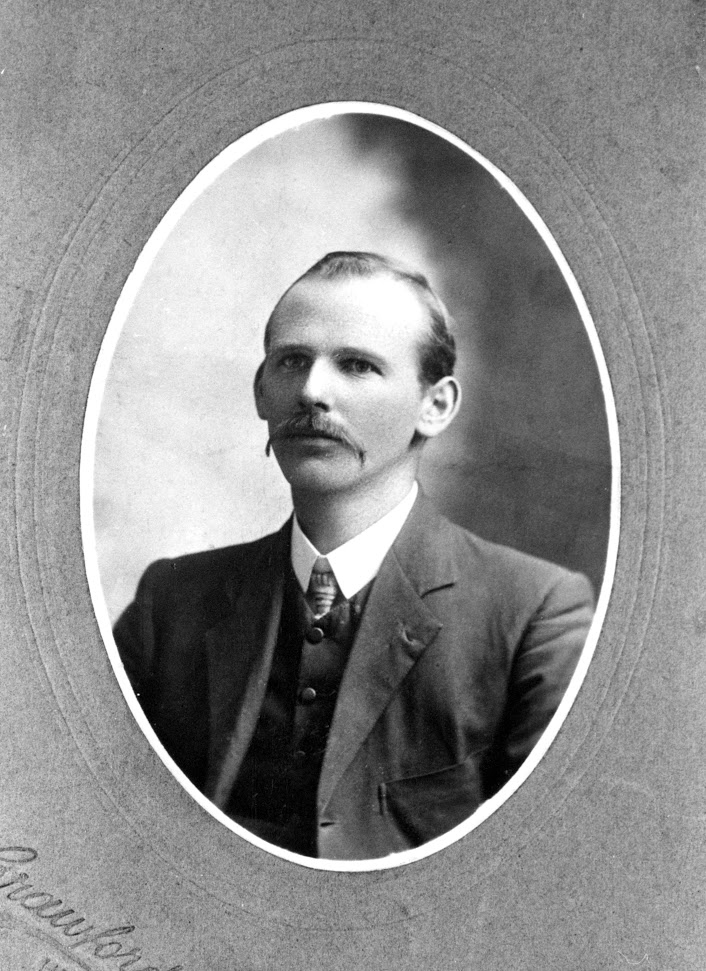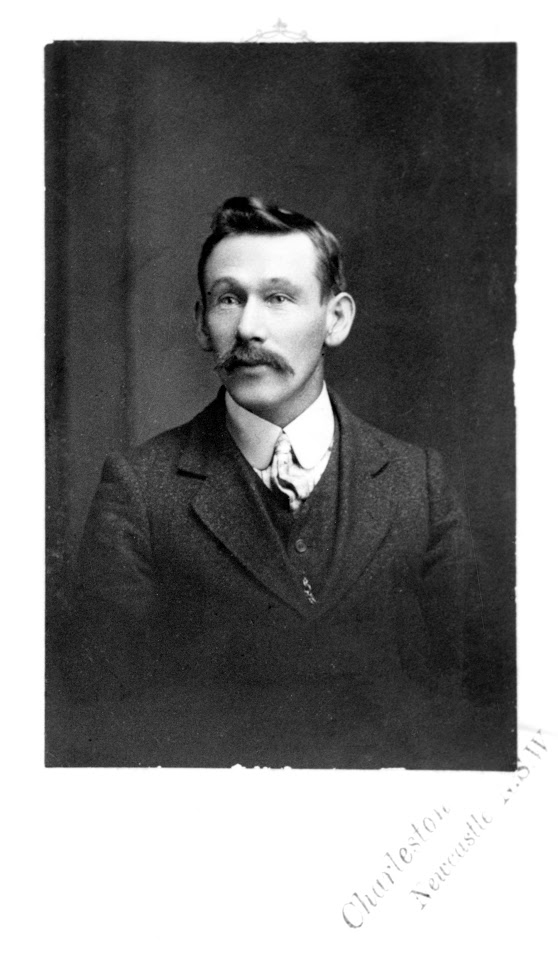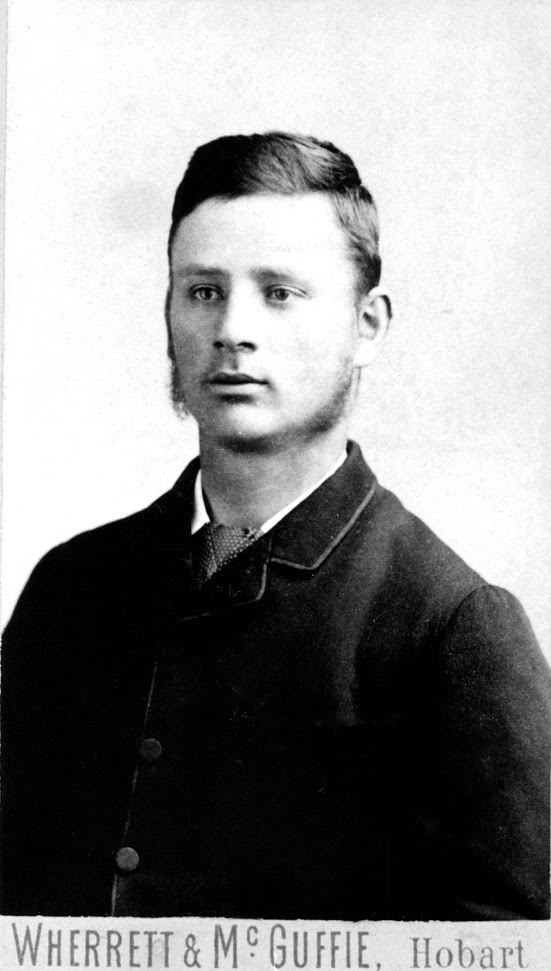
Gustav Adolph is a fondly remembered great uncle for the few remaining Brandstater cousins who knew him in his retirement years in Dural and Merry-lands. I am one of those cousins. I visited him at his farm in Dural when I was a schoolboy in Sydney and in Wollongong. But now we have learned much more about him, and we are telling his story here.
Gustav Adolph was the name his parents gave him when he was born. But this name deserves explaining. The few Brandstater cousins who knew this elderly relative, knew him by a different name: Uncle Arthur. But that was an assumed name by which he chose to be known during and after the First World War. Anyone then who had a Germanic name, was suspected as having uncertain loyalties. So many such persons in England-loyal Australia modified their family name to conceal their background. But Gustav chose to stick with his original Brandstater surname, though he did change his given Christian names to Arthur, something well known in Australia, and which in Europe often appears as Artur.
In this story we will return to his original European names, of which he was proud. In his early adult years Gustav Adolph became involved in the activities of the newly established Seventh-day Adventist church. When he is mentioned in early church publications, he was always identified as G. A. Brandstater. A group photograph of church workers identifies him this way.
Gustav was the third child born to Emanuel Brandstater Sr. and his wife, Wilhemine Josties, living in East Prussia. Two earlier children were Emanuel Jr and Louisa. We are not sure of Gustav’s birthplace during those first years of this young family, or where they were living. Searching church records has not helped us. But we do know that as a young man his father Emanuel was employed as a shipwright in the Port of Konigsberg. So it is likely that at that stage the family was living in or close to the busy capital city. Gustav would have been with them, and we can conclude that he was a normal vigorous child.
But there came an unexpected and sad event. Some calamity, possibly severe illness, overtook the family after baby Gustav joined the family. Following his birth Wilhemine disappeared from any records, and we do not know the cause of her death. Unfortunately we have no photographic record of her. But we honor her because of her distinguished progeny; both of her two sons, Emanuel Jr and Gustav Adolph, had productive and honored careers.
We hear no more of Gustav until his family made the big decision to leave East Prussia and seek a new life in faraway Australia. I learned about these details by inspecting the Embarkation Book in the Port of Hamburg in Germany. By navigating the River Elbe, large ocean-going ships could frequent the busy inland Port of Hamburg, from which millions of Europeans, during several decades, emigrated to foreign lands. Weary of inter-nation warfare and driven by worsening economic conditions, they abandoned their European homelands to seek a better life for themselves elsewhere. The new homes they established were commonly in the United States of America, Canada, Brazil, Argentina, and a few of them even settled in distant Australia.
By 1869 Emanuel had married a second wife named Carolina, from a family named Lange, and the expanding Brandstater family had been living close to the Lange family in or near to the town of Benkheim. The Embarkation Book in Hamburg names Benkheim as the Brandstaters’ town of origin. It was from here that they set out for Hamburg, to embark on ship for the long voyage to Tasmania. Though previously a modest-size German farming town in East Prussia, Benkheim is now located in territory assigned to the country of Poland after World War II. It now has the name of Banie Mazurskie, and is still a farm town where there are fields of grain and scattered herds of dairy cattle. The family finally left Benkheim in October 1871; they were Emanuel, Carolina, Emanuel Jr, Gustav Adolph, Carolina Jr and a baby-in-arms named Herman.
A new life in Australia
After boarding ship in Hamburg, young Gustav Adolph was simply a member of a shipboard family, sailing on the SS Eugenie, a German steel-hulled sailing ship bound for Hobart in Tasmania. They set sail in October 1871, and had some mishaps on the long voyage, during which four passengers died. But they reached Hobart at last in March 1872. While heading south in the West Atlantic the ship stopped for some days in a Brazilian port, where many passengers who were aiming for South America were disembarked, and with fewer passengers the Eugenie sailed around the Cape of Good Hope, and aimed east for Australia. The passengers were not all pleased with conditions on the ship. The food was poor (there were cases of scurvy), and there were complaints about behavior of the crew. They refused to disembark in Hobart until an official at Hobart Port came on board to hear and put on record their complaints about the ship and its management.
Gustav was six years of age when they reached Hobart, and he followed the family after his father Emanuel Sr found employment at Cambria estate in Swansea. His only spoken language was German, but kindergarten schooling was required for all Australian children starting at age five, and we can assume that he attended the state school in Swansea, which still stands on the main road opposite the beach. This is where the two brothers, Emanuel Jr and Gustav, began their crash course in English language, and of course they quickly learned the playful behavior of Australian schoolchildren. Gustav was too young to help with Emanuel’s work on the farm.
After several years the family, including Gustav, moved to Bismarck, where father Emanuel acquired a 37 acre tract of land, and began to develop a mixed farm. Schoolwork for the boys continued in Bismarck, and Emanuel Jr and Gustav Adolph were probably two of the first students to enroll in the new village public school built in 1876 by their father Emanuel. With each passing year Gustav grew in physical size, in English language, and in school competency, and we possess a good photo of him during his teenage years in Bismarck. We have no record of his finding employment except in the family farm and in neighboring properties that surrounded them. He must have learned well the basic skills of managing a farm.
But Gustav Adolph was not satisfied with a career in subsistence level farming. In 1895 he met an exceptional visitor in the person of Ellen G White, an Adventist church leader who was visiting Hobart to encourage a company of new church members there. And she also visited the vigorous group of members in nearby Bismarck. She spent personal time with some of them, including the Brandstater family, now well established and living in a house owned by the Darko family and located behind the recently built church. We can assume the family was present at the church’s dedication in 1889. During this visit, Mrs. White talked about serious life-goals with the young men of the family. At that time Gustav Adolph was 23 years old, and his formal education had been limited to what he could obtain at the Bismarck school. Ellen White could see here some able young men with fine potential. But they were limited in their career dreams because of limited education and without other role models were unable to aim for any lifework higher than the humble subsistence farming they were doing in Bismarck. They needed more education, and money to pay for it. So Mrs. White urged upon them the need to get higher education, both in their Bible-based religious faith and also in useful business skills, whatever was available in their chosen school.
Those farm-based boys had little spendable money to pay for travel and college education. But first Gustav Adolph, and later his younger brother Charles Albert, did find the resources with which they could travel to Battle Creek in Michigan where they enrolled in the Adventist college, Battle Creek College. It is likely they could do this only with undisclosed financial help and spiritual counsel from Ellen White.
Education and marriage in America
For Gustav Adolph, this time spent in America was life changing. In one important arena, his personal life partnership was settled. In Battle Creek he courted, and soon married, another young Adventist believer, Florence Grattidge, who was also from Australia. We have very little information about the bride’s family background. It may be the young couple had been acquainted and friendly before separately going to Battle Creek for education. But once there, they made good use of their closeness. Their wedding took place at the one house that was familiar to the circle of Australian students at Battle Creek College. It was the house that had been occupied by Ellen White’s son Willie, his wife and two daughters. But Ellen was now hard at work, preaching and writing in Australia, and Willie’s wife had died of tuberculosis. So Willie had accepted his mother’s pleading that he come to Australia and work as her assistant. He left his two precious daughters in the generous care of a trusted family, and became a valuable helper to Mother Ellen. So the White house in Battle Creek was now unoccupied, and it became a social gathering place for the contingent of Australian students. That living room was the place where Gustav Adolph and Florence exchanged their marriage vows. The house still stands today, and there survives a low quality photograph of the couple standing side by side in that living room.
Some years of study remained for them in Battle Creek and Gustav eventually graduated from the school of nursing. Two daughters were born to them, one (Grace) born 1895 in Battle Creek and one (Myrtle) born 1896 in Chicago. Moreover, Gustav had a firsthand opportunity to be exposed to the intricacies of Church and College management, and also both the strength and the frailties of opinionated leaders. He also could observe up close the skills and disciplines that were required in managing a large health-promoting sanitarium. Adding this experience together, we can surely know that when Gustav Adolph Brandstater arrived back in Sydney, besides his nursing credentials, he brought with him some insights into education policies and skills in managing people that would qualify him for a variety of unforeseen jobs. The timing was late in the 1890s, before the ominous year 1900 dawned.
Challenging assignments in New Zealand and Australia
Work assignments were not long coming. Church leaders in Wahroonga saw the need for a new church thrust in South New Zealand, and they presented to Gustav Adolph the pioneer task of establishing and managing a health institution, a sanitarium, in the city of Christchurch. If anyone could do it, surely Gustav Adolph could succeed, after just returning from the big Battle Creek Sanitarium. A small group of Adventist believers had been organized in Christchurch, but there was huge opportunity for developing an institution for health ministry, which the Church had come to recognize as an outreach to the city community. It included both the healing and teaching roles. It was, in fact, a mode of ministry that was exemplified in the life of Jesus.
Working as he had done in Kellogg’s Battle Creek Sanitarium, Gustav was expected to understand the physical properties and the day by day workings in a sanitarium. He was young, but he was confident and optimistic, and he knew what was needed. Accompanied by church leaders, he scoured Christchurch and the country around it to identify a property that had the potential to provide spaces for rehabilitation and live-in dietary reform, supervised exercise and rest-cures for persons with chronic health problems. Gustav had learned well from Kellogg an outline of the lifestyle reform that could quickly win the confidence of the citizens of Christchurch, and he knew he could teach the rules of healthful living.
A property was at length identified in the suburb of Papanui, and negotiations commenced for its purchase. We cannot describe here all the details of the sanitarium and its preparation to serve the purpose Gustav had for it. An American qualified medical doctor was invited to come and serve as medical director of the sanitarium. He would be the credentialed professional who would attract patients, perform history-taking and physical examinations, make diagnoses, and lay out a plan of treatment. But all of the other professional activities, the nursing care, the physical therapy, the health-promoting diet, and all management functions were in the hands of Gustav Adolph Brandstater. Further, he early gravitated into leadership roles in the Christchurch Adventist community. Church records reveal that the institution was officially inaugurated, with great rejoicing, in about the year 1900.
Reports that appeared in the Church’s magazine “The Record” told of early success and a promising welcome from the citizens of Christchurch. In time, business became so brisk that Gustav was in urgent need for additional staff. Searching for competent persons he could trust, and who would convey a warm yet serious Christian bearing amongst patients, Gustav knew where to find them. One by one, members of the Brandstater family in Bismarck came to join the Sanitarium staff. Nieces Annie and Louisa, two daughters of Gustav’s older brother Emanuel Jr, provided nursing care and much of the bedside service and meal preparation. Exercise and physical therapy was superintended by Ernest, Emanuel’s oldest son, who was taught some of the Kellogg methods by his Uncle Gustav. Ernest also became the accountant and record-keeper. So it happened that for several years the Papanui Sanitarium was operated and run largely by a team of Brandstater family workers from Tasmania. For years the sanitarium experienced growing success and expanding clientele. Several medical directors came and went, but it was Gustav Adolph who remained as the backbone manager, the teacher about principles of healthful living, and the visionary institution leader.
Gustav’s personal family life should be noted here. When he first returned to Australia from Battle Creek, he brought with him two daughters, Grace and Myrtle. In Christchurch the family grew further. A son joined the family in 1900, named William, or Will. For him, as he came to maturity, New Zealand seemed to have career limitations that made him want to explore different places. So Will packed his bags and migrated to a booming place called California. There he earned certification as a physical therapist, and ran a successful practice in that field for many years. He married an American wife named Ruth, and they produced a daughter named Rosemary. Sadly, this girl developed a rare disorder known as neurofibromatosis, which shortened her life. However, Will and Ruth were lifelong residents of Glendale, and were active members of the Glendale City Adventist Church.
Gustav and Florence had a second son named Reuben in 1902. He is seen as a handsome young man in the family photograph. He married Leishan Lemke, and they had a large family. First they adopted Ray, but then came Donald, born 1927, who married Norma Fiddyment, and later Betty Meers. I remember Don as a young man before marriage, visiting our Brandstater home in Adelaide when he was a hard-working truck driver and I was a medical student. After him in 1929 came Allen, who developed a successful waste disposal business in Sydney. He married a competent and supportive wife Yvonne Taylor, with whom he parented three vigorous children, Suzanne (1961), Karen (1964) and Paul (1968). I (Bernard) enjoyed a happy meeting with this family sometime in the 1970s when they lived in an attractive home in a south Sydney bayside home in Coogee.
Reuben’s last child was a son Neville, born 1931. As a young man Neville left the close family network, and migrated to Western Australia. There he married Violet and established a fine family consisting of Eric, Lola, Fawn and Kurk. All of these are now have children of their own, and all have remained in Western Australia. Eric has a heavy-duty trucking business, and Kurk is owner-manager of a computer parts business in Perth. Lola married Shane Jones, lives in Broome, and she works for the State Education Department, superintending the education of indigenous native bush children. Lola is an expert in several aboriginal languages.
Reuben remarried in later life, and I remember his second wife well because Reuben brought her to a Brandstater family reunion at Uncle Arthur’s farm in Dural, sometime around 1940. I don’t have her name, but she is remembered because of her hair dyed a vivid red. Reuben is exceptional in the family history because he chose to be something of a maverick. He neglected family traditions and the widely shared attachment to the Adventist church. He earned his livelihood in several different business directions, but no principal career claimed his productive years. Because of his separation from most Brandstaters, we have obtained no information of his later life or his death.
One more person should be introduced here amongst other members of Gustav Adolph’s family: an adopted daughter Florence. She was welcomed into the Christchurch family as a baby when the other siblings were well into young adult life. We do not know the circumstances that surrounded this adoption. She moved to Sydney with the family when she was just five years of age. Florence remained with the old folks for many years, and was a loyal and grateful daughter. In adult life she married a Mr. Bushell.
Gustav Adolph and his family prospered in the early years, along with the sanitarium. But external factors, far outside the control of any church or health institution, brought a regretted end to the buoyant life of the sanitarium. A worldwide economic downturn followed soon after the end of World War I, and severe depression brought hardship to some large leading nations. The economic depression hit New Zealand, which was dependent for its prosperity on its exports, especially to Britain. Its overseas sales dropped catastrophically. These events affected Christchurch hard, and with many people unemployed and without income, those people who most needed the health care available in the sanitarium were not able to pay even the modest charges that were set. This economic depression had no quick and easy correction. Our respected and wise Uncle Arthur, as he was becoming known, could read the writing on the wall. Unable to earn enough revenue to pay wages to his staff, he had no choice but to plan for the sanitarium to close its doors.
That sad event occurred in 1922. Although the sanitarium doors were closed to patient care, there remained a significant use for the property. The Sanitarium Health Food Company, owned by a division of the Adventist Church, was doing well in Australia, and it saw a need for a production factory in South New Zealand. The spacious sanitarium property in Papanui had room for a factory building, and that is what appeared as the immediate successor to Uncle Arthur’s sanitarium. The nursing staff disbanded.
G.A. Brandstater and his family returned to Sydney in Australia. Ernest Brandstater stayed on in Christchurch with his family, steady employment having been offered to him by the Health Food Company. Ernest later became well-known in Christchurch as the gifted designer, gardener and custodian of the prize-winning gardens of the Health Food factory.
Return to Australia, new work, family reunions
An experienced and versatile man like Gustav Adolph was quickly put back to work by Church leaders. Soon after his return to Sydney he was made the manager of the large Sydney Sanitarium in Wahroonga, a position that he held for five years. During this time the family lived in the southern Sydney suburb of Coogee, close to lake and beach resorts. In a letter she wrote to me in 1986, Florence described how in those low-income days, G.A. had no car, and he commuted to Wahroonga every day by train. For one additional year he was assigned to manage the “Hydro” hospital-sanitarium in Warburton, Victoria. But about 1928 our Uncle Arthur, the name by which he was now known, finally reverted to his Bismarck farm management roots, and purchased a fruit farm property in Sydney’s northern suburb, Dural.
The family lived on this property for 17 years, Florence told me. I remember it well from two family reunions held there. The farm included two old brick farmhouses, one of them occupied by Uncle Arthur and Florence, and the other by Reuben. Though I made no conscious effort to take note of details of that farm, I do remember the row of huge old pine trees along the entrance driveway. Florence told me they had been cut down and sold because they provided good wood for manufacturing matches. The only fruit I ever noticed, produced in that farm, were dark-colored plums, very ripe and stacked in boxes in a wide open shed.
Young Florence grew to adulthood on that farm in Dural. To me she reported in later years that its purchase was strongly urged by Reuben, claiming that a farm environment would be good for his ailing health. But while there, he apparently showed little enthusiasm for helping with work on the farm. Again quoting Florence, Reuben was something of a rebel. He went his own way and did not keep in close touch with the family. He eventually divorced Leishen and married Joan the redhead.
The farm has memories of two Brandstater family reunions, which now can be seen as an unspoken recognition that Uncle Arthur was the most senior surviving member of the original First Immigrant Family. We have no photo record of those family gatherings, and that was an unfortunate neglect. All we have is a small black and white snapshot of Arthur and Florence outside their farmhouse. I do remember assorted uncles, aunts and cousins who turned up. But the memories are indistinct now, after many years, and in a time when personal cameras were rare, family members had not realized the importance of making a historic record of a large family.
It is fortunate that the first immigrant Emanuel Sr, our patriarch, went to considerable effort and expense to assemble family members at the old farmstead on Springdale Road in Bismarck. The large family portraits we have from those gatherings are precious today. I have spent much time gazing at each of those faces, seeing written there signs of personality and character that bring them alive to me, long after they have gone. The photos were commissioned by Grandfather Emanuel S. in his later years in Bismarck, about the year 1900, when Albert and Margaret had returned from America, Herman and Minnie were visiting from N.S.W., and Gustav Adolph was visiting from New Zealand. Emanuel Sr deserves lasting credit for the gifts he left us of those irreplaceable family portraits.
Most readers of this website will have no personal memories of these faces from the family tree. But I did meet them, at the reunions and other times, all except my grandfather Emanuel Jr, who died in 1915. They included brothers Gordon and Roy and their families. I do have good memories of Gustav Adolph, Herman, and even Californian Albert from his one visit to Sydney. To this day I have deep feelings of the congeniality and family bonding that emanated from them and their families. I can’t describe it, but somehow, even back then, I saw the Brandstater family as distinct and special, possessed of a rare mutuality and loyalty. It is a feeling that I find hard to define. But my cousin Joy, daughter of Ernest in Christchurch, described to me in her late years what kind of man was her father, my uncle Ernest. He was her long-past parent who had visited N.S.W. when I was very young. Referring to his warm and generous friendliness, she said: “He was a real Brandstater.” Please consider thoughtfully what those words mean.
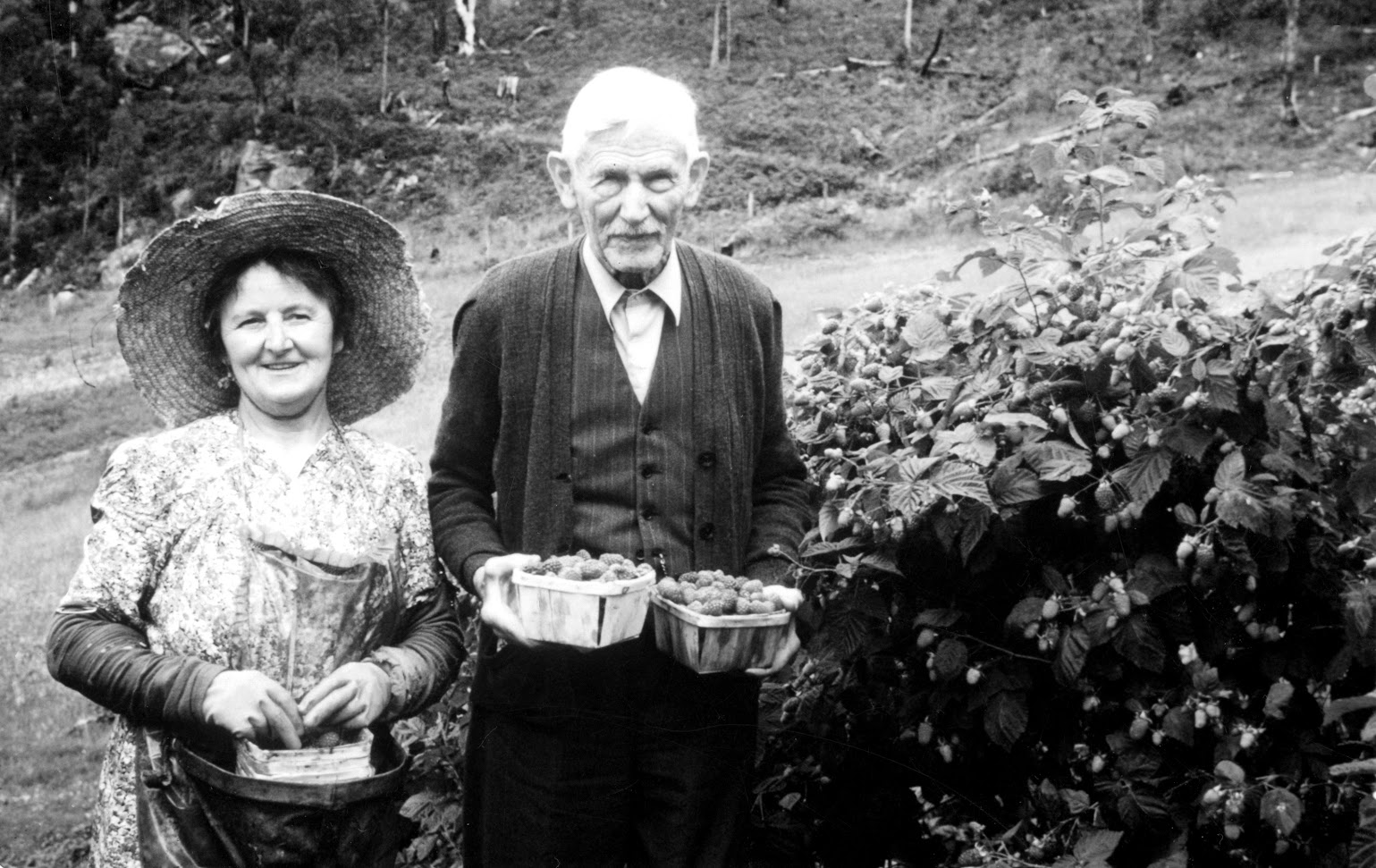
The Dural farm still stands, though much of the farm has been subdivided for housing. The old house has been gutted and is now used as a horse stable. When Uncle Arthur finally sold the farm, he moved to Merrylands, another suburb, where he lived until the ripe age of 96 years. Florence assured me his mind and his memory were well preserved until he died in his sleep. During earlier years he had kept in regular contact with family members in East Prussia and Berlin.
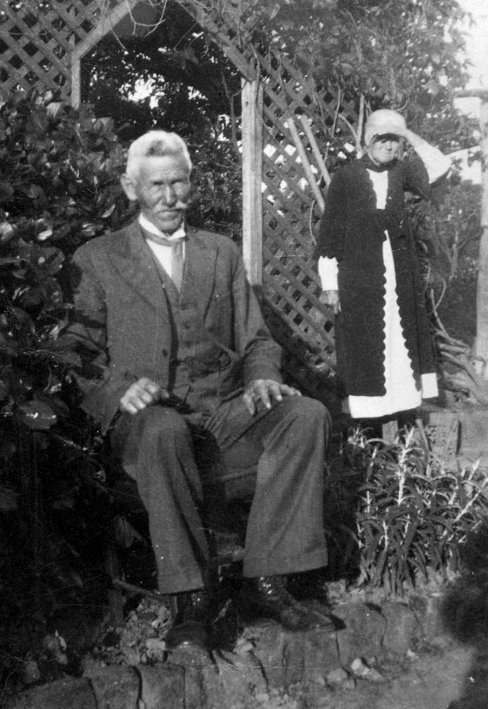
That record of his contacts with the family members in East Prussia tells us that from early childhood Gustav Adolph learned and spoke his family’s German language. He had started to learn English soon after arriving at Tasmania and attending school in Swansea. But for a long time all conversation in the family would have continued in their native German. Schoolboy Gustav could have learned enough written German to match his English. It enabled him to read German materials from Europe, and to maintain a letter exchange with his sister Louisa in Prussia, and also with her daughter Louisa Jr in Berlin. Florence reported that Arthur had collected a large number of letters and photos received from family members in Europe. But the whole lot, tragically, was destroyed in a house fire that destroyed the Merrylands house and all its content in a few minutes. So we have been left with the tedious task of reconstructing much of that Prussian history with the help of Louisa Jr’s son, my cousin and friend Wilhelm (Willi) Beutenmuller.
I have described the careers of Gustav Adolph’s two sons, Will and Reuben. But I must mention also the two daughters that were born in the United States. Grace grew to young adulthood in New Zealand, and eventually married a Mr Amyes, who later served as best man at the wedding of Ernest Brandstater and Martha Nillson. But this Amyes was unreliable, and fell in love with another woman. So Grace came to Sydney and lived with her parents in Dural. Grace still cared for Amyes, and Florence insisted she expected to be reunited with him. But that hope vanished when her man died unexpectedly.
Myrtle completed a nursing course, and she managed a nursing home in Wahroonga that was known as “Airlie”. She was a sweet, tender-mannered woman who always demonstrated much affection when she encountered me and saw in me the son of her cousin Roy. She married a Mr Damschke, about whom Florence had few compliments, citing some eccentricities that were never described. Myrtle had no children of her own, but took custody of two girls. One of them, Sue, came to be close and daughter-like to Florence.
We have come to the last years of Gustav Adolph Brandstater. He continued to live in his restored Merrylands house, and he remained alert, with active mind and memory until, at age 96 in 1959, he died in his sleep. He remained keenly interested in the affairs of Sydney Adventist Hospital, and also the missionary work done in Fiji and other Pacific islands by members of the Brandstater family. Quite late in life he did some ambitious traveling in the Pacific area, and we have a face photograph of him, retrieved from a discarded passport. Till the end he was a devout Adventist Christian, and was always a stalwart church man.

